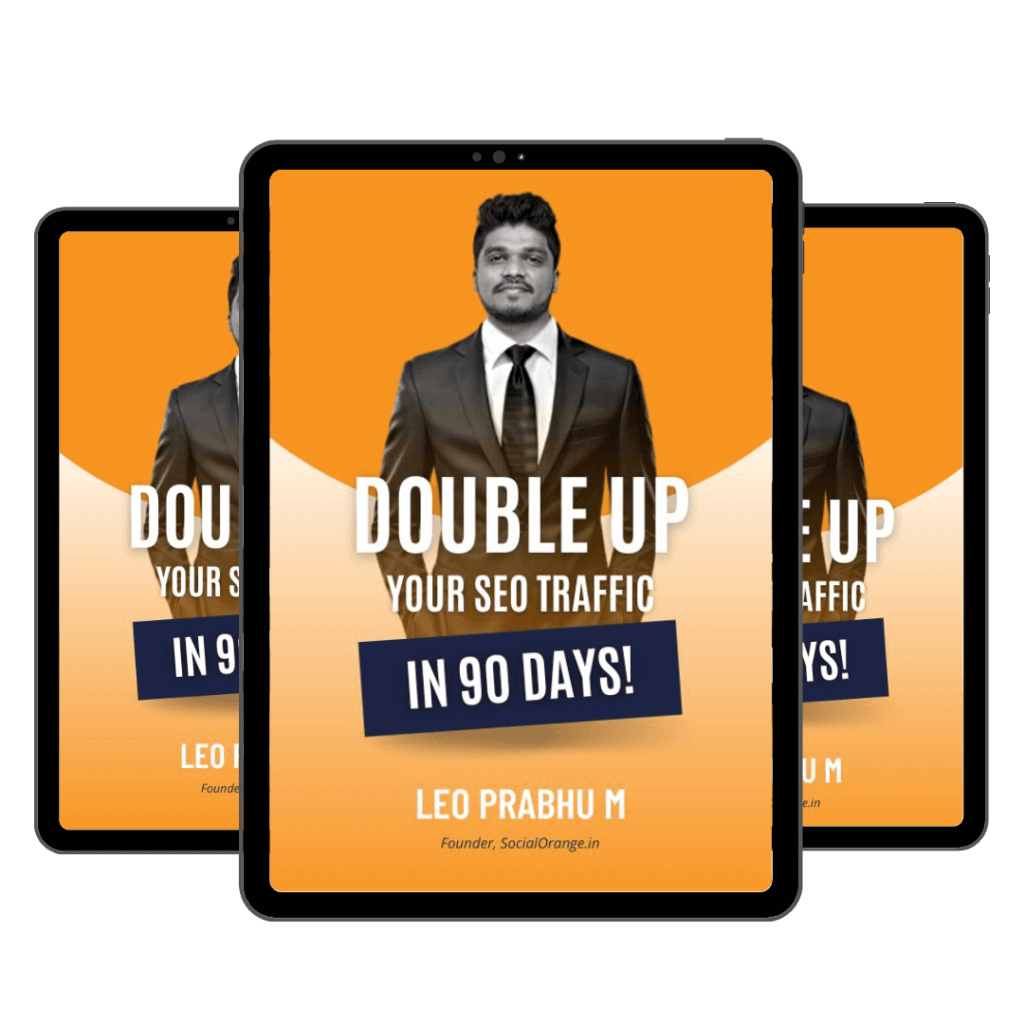In recent years, the landscape of marketing has undergone a significant transformation, with a pronounced shift towards inbound strategies. This transition has highlighted the crucial role of lead nurturing in converting prospects into loyal customers.
Table of Contents
ToggleIn this dynamic environment, the traditional outbound approaches are giving way to more personalized, relationship-focused methodologies. This blog explores the importance of lead nurturing in inbound marketing, emphasizing its significant role in cultivating and sustaining customer relationships.
The subsequent sections explore the profound impact that effective lead nurturing can have on inbound marketing results. As businesses adapt to this evolving paradigm, understanding the intricacies of lead nurturing becomes paramount for sustained success.
You will also find seven powerful lead-nurturing strategies with examples that can elevate marketing strategies to new heights. By implementing these tactics, businesses can not only enhance customer engagement but also optimize their conversion funnels, ultimately driving sustainable growth in the fiercely competitive digital landscape.
According to Marketingserpa– the primary reason for the disappointing 79% of marketing leads failing to convert into sales is often attributed to the absence of effective lead nurturing strategies.
Understanding the Lead Nurturing Process
Lead nurturing, a cornerstone of modern marketing, encompasses a strategic process designed to foster relationships with potential customers throughout their buying journey. At its core, lead nurturing involves personalized engagement with prospects to guide them seamlessly through the sales funnel.
This tailored approach transcends mere communication, focusing on building trust and delivering relevant content at each stage of the buyer’s journey.
Purposeful engagement during the buyer’s journey is pivotal, as it not only educates prospects but also establishes a connection that transcends transactional boundaries.
In understanding the link between lead nurturing and customer decision-making, it becomes evident that a well-crafted nurturing strategy significantly influences a prospect’s perception, aiding in informed choices.
As businesses recognize the symbiotic relationship between lead nurturing and decision-making processes, they unlock the potential to shape positive customer experiences and foster lasting brands.
Effective Lead Nurturing Strategies
Targeted Content
Targeted content is a strategic approach in digital marketing that involves tailoring materials to specific audience segments for enhanced engagement and conversion.
The Process involves
Understanding Buyer Personas
To craft compelling content, understanding buyer personas is pivotal. By delving into the characteristics, preferences, and behaviors of target audiences, businesses can customize their messaging to resonate effectively.
This deep understanding ensures that content is not only relevant but also aligns with the specific needs of different customer segments, creating a more personalized and engaging experience.
Creating Tailored Content for Unique Personas
Crafting content tailored to unique buyer personas enhances audience connections. By addressing the distinct challenges, interests, and goals of various segments, businesses can create a more impactful and resonant message.
This tailored approach goes beyond generic content, fostering a sense of relevance and relatability that captivates audiences and encourages them to engage, convert, and establish long-term brand loyalty.
Use Automation for Scalability
Implementing marketing automation is integral to scaling personalized, targeted content delivery. Automation streamlines the distribution of tailored content, ensuring consistency and timely delivery.
By leveraging marketing automation tools, businesses can efficiently manage large-scale content strategies, automate repetitive tasks, and focus on strategic aspects.
You can use CRM platforms like Salesforce for better management.
If you need a developer to integrate the CRM platform with your application, you can hire a developer who can integrate it for you.
This not only enhances efficiency but also allows for continuous optimization, maximizing the impact of targeted content across diverse audience segments.
Multi-Channel Lead Nurturing Techniques

Lead nurturing has evolved beyond traditional email drip campaigns. Modern strategies encompass diverse channels, including social media, retargeting, and dynamic website content. This evolution ensures a holistic and personalized approach, engaging leads through various touchpoints in the buyer’s journey.
Integration of Marketing Automation Platforms
Successful multi-channel lead nurturing relies on the integration of robust marketing automation platforms. These tools enable seamless coordination between channels, allowing marketers to deliver cohesive and targeted messaging. Automation enhances efficiency, ensuring timely and relevant interactions across diverse channels for a unified customer experience.
Multiple Touches
Nurturing leads involves multiple touches, with prospects typically receiving around ten marketing interactions from awareness to conversion. Consistent engagement at various stages helps build trust and guides prospects through the buyer’s journey, ensuring a comprehensive understanding of the product or service.
Addressing Common Questions and Concerns:
Successful lead nurturing addresses common questions and concerns, providing valuable content that alleviates uncertainties. By proactively addressing potential roadblocks or queries, marketers foster confidence, guiding leads smoothly through the buyer’s journey. This personalized approach demonstrates attentiveness and contributes to a positive customer experience.
Diversifying Content Types for Effective Nurturing:
To enhance lead nurturing, diversifying content types is crucial. Beyond traditional methods, incorporating social media, blog posts, whitepapers, and interactive tools ensures a rich and engaging experience.
Tailoring content to address different preferences and learning styles maximizes the impact, creating a more comprehensive and effective lead-nurturing strategy.
Timely Follow-Ups
Immediate follow-up calls offer substantial benefits in lead conversion. Timely engagement, based on recent website interactions, significantly increases the likelihood of converting leads into qualified sales opportunities. This approach capitalizes on the prospect’s active interest, providing a personalized and effective strategy to guide them through the next steps in the buyer’s journey.
Role of Automation in Reaching Large Prospect Groups:
Automation plays a pivotal role in executing timely follow-ups, especially when dealing with large prospect groups. Marketing automation platforms enable businesses to schedule and personalize follow-up communications efficiently. Automated responses to specific website interactions or lead behaviors ensure that every prospect receives prompt and relevant follow-ups, contributing to a more streamlined and scalable lead nurturing process.
The Effectiveness of Personalized, Well-Planned Calls:
Personalized and well-planned follow-up calls significantly enhance effectiveness. Utilizing insights gained from lead tracking and behavior analysis, sales representatives can tailor their conversations to address specific needs and concerns. This approach fosters a more meaningful connection, demonstrating a genuine understanding of the prospect’s requirements and increasing the chances of converting leads into satisfied customers.
Personalized Email
Despite evolving digital landscapes, email marketing remains highly effective. Personalized emails, in particular, continue to be a powerful tool for engaging audiences. By tailoring content to individual preferences and behaviors, businesses can foster stronger connections with their audience, resulting in increased open rates, click-throughs, and overall campaign success.
Strategies for Personalizing Emails with Triggered Actions
Successful email personalization involves implementing triggered actions based on user behavior. By leveraging actions such as content downloads, website visits, or interaction with previous emails, businesses can send targeted and timely messages.
Utilizing marketing automation tools, these triggered emails create a more personalized and relevant experience, enhancing the likelihood of conversion and customer satisfaction.
Lead Scoring Tactics
Lead scoring is a methodology that ranks prospects based on their perceived value to the organization. By assigning numeric values to certain behaviors, interactions, or demographic data, businesses can prioritize leads, focusing efforts on those more likely to convert. This strategic approach streamlines the sales process and optimizes resource allocation for maximum efficiency.
Implementation of Marketing Automation Platforms:
Implementing lead scoring effectively requires the integration of marketing automation platforms. These tools enable businesses to assign scores automatically based on specific criteria, such as website interactions, email engagement, or social media activity.
Automation ensures a consistent and objective approach, allowing for real-time adjustments and providing valuable insights for refining lead nurturing strategies.
Determining Sales Follow-Up and Nurturing Needs:
Lead scoring aids in determining the appropriate level of sales follow-up and nurturing required for each prospect. High-scoring leads may warrant immediate and personalized attention from the sales team, while lower-scoring leads may benefit from further nurturing through targeted content.
This segmentation ensures that resources are allocated efficiently, maximizing the chances of converting leads into loyal customers.
Sales and Marketing Alignment
Sales and marketing alignment enhance overall success. When teams collaborate seamlessly, sharing goals and insights, it results in more effective lead nurturing, improved customer retention, and increased revenue. The synergy between these departments creates a unified approach, fostering business growth.
Identifying Points for Transition Between Sales and Marketing
Identifying key points in the buyer’s journey where prospects transition between sales and marketing is essential. Clear delineation ensures a cohesive customer experience. Utilizing triggers like lead scoring, workflow enrollment, and conversion events guides effective handovers, allowing each team to contribute strategically to lead nurturing.
Establishing Service-Level Agreements for Accountability
Successful sales and marketing alignment relies on well-defined service level agreements (SLAs). Establishing clear expectations, responsibilities, and goals creates mutual accountability. SLAs ensure both teams actively contribute to lead conversion and effective nurturing, fostering a collaborative environment that maximizes overall business success.
According to Gleanster, an estimated 15% to 20% of leads that were categorized as “not ready yet to purchase” successfully converted into revenue-generating sales after implementing lead nurturing.
Additionally, nurtured leads exhibit a noteworthy trend, making purchases that are 47% larger compared to their non-nurtured counterparts, according to insights from Invespcro.
7 Examples of Lead Nurturing
- Abandoned Cart Recovery
True Classic tackles abandoned carts by swiftly sending a limited-time offer to potential customers. This urgency, coupled with a tempting offer, maximizes the chances of converting leads into customers who are on the verge of making a purchase.
- Automated Chatbots for Website Interaction
Utilize automated chatbots on your website to engage leads in real time, answering queries, providing relevant information, and directing them to specific resources based on their interactions.
- Milestone Celebrations
For lower-intent leads, a chiropractor fosters a friendly dialogue by sending birthday wishes via SMS. This personalized touch creates a positive interaction, establishing a connection that goes beyond transactions and showcasing the importance of cultivating relationships with leads.
- Dynamic Remarketing
Retail shoe stores leverage Google’s dynamic remarketing ads, automatically showcasing products viewed by leads. The travel industry excels at this, using retargeting ads to make the purchase process seamless and emphasizing the significance of personalized lead nurturing for conversion.
- Maintenance Reminder
Home services companies use automated texts for timely maintenance reminders, seizing opportunities for recurring business. This tactic, adaptable for consumables like toothpaste, proves effective in reminding leads to make regular purchases, showcasing the versatility of automated lead nurturing strategies.
- Social Listening
Viking Wood Splitter excels in lead nurturing through social listening. By actively engaging in conversations where their brand is mentioned, they provide answers and advice. This organic approach fosters a connection with potential customers, demonstrating the power of genuine interaction in nurturing leads.
- Webinar Invitations
Invite leads to participate in webinars or virtual events that showcase your expertise, address industry challenges, and provide opportunities for direct engagement and Q&A sessions.
Benefits Of Lead Nurturing

Lead nurturing is a crucial aspect of the sales and marketing process that involves building and maintaining relationships with potential customers throughout their buying journey. Here are some key benefits of lead nurturing:
- Increased Conversion Rates
By consistently engaging with leads and providing relevant information, you keep your brand top-of-mind when they are ready to make a purchase decision. This increases the likelihood of converting leads into customers.
- Building Trust and Credibility
Nurturing leads involves delivering valuable content and addressing their concerns. This helps in building trust and credibility, as potential customers perceive your brand as knowledgeable and reliable.
- Better-Qualified Leads
Through lead nurturing, you can gather more information about leads’ preferences and behaviors. This helps in identifying the most promising prospects and focusing your efforts on those who are more likely to convert, resulting in better-qualified leads.
- Shorter sales cycles:
By providing relevant information at each stage of the buyer’s journey, you help leads make informed decisions more quickly. This can significantly shorten the sales cycle, leading to faster conversions.
- Cost-Effectiveness
Nurturing existing leads is often more cost-effective than acquiring new ones. It requires less marketing spend to keep leads engaged than it does to attract entirely new prospects.
- Improved Customer Experience
Personalized and targeted communication during lead nurturing enhances the overall customer experience. It shows that your company values individual needs, leading to a positive perception of your brand.
- Reduction in Lead Attrition
Lead nurturing helps prevent leads from going cold or losing interest. Regular and relevant communication keeps your brand on their radar, reducing the chances of them choosing a competitor.
- Data-Driven Decision-Making
Lead nurturing campaigns generate valuable data about lead behavior and preferences. Analyzing this data enables you to make informed decisions, refine your marketing strategies, and tailor your approach based on real-time insights.
- Enhanced Cross-Selling and Upselling Opportunities
By understanding your leads’ needs and preferences, you can identify opportunities for cross-selling or upselling additional products or services, thereby increasing the average transaction value.
- Alignment of Sales and Marketing Teams
Lead nurturing encourages collaboration between sales and marketing teams. It fosters a shared understanding of the customer’s journey and ensures that both teams are working towards the common goal of converting and retaining customers.
Conclusion
Effective lead nurturing is not just a strategy; it’s a dynamic and personalized journey that guides potential customers toward conversion. By understanding buyer personas, delivering targeted content through multi-channel approaches, and implementing timely follow-ups, businesses create a compelling narrative that resonates with their audience.
The synergy between sales and marketing, coupled with lead scoring and personalized communication, refines the nurturing process. This strategic alignment cultivates a responsive and engaged customer base, driving loyalty and revenue.
As the landscape evolves, leveraging marketing automation and adopting best practices ensures scalability and efficiency in lead nurturing efforts. By embracing these proven tactics, businesses not only navigate the complexities of the buyer’s journey but also establish lasting connections, ensuring sustained growth and success in an ever-changing marketplace.
FAQ’s
What is lead nurturing, and why does it matter?
Lead nurturing is building relationships with potential customers. It matters because it helps gain trust, provides relevant information, and encourages long-term customer connections.
How does targeted content help in lead nurturing?
Targeted content tailors messages to specific audience groups, making them more relevant. This approach increases engagement and loyalty.
What’s the role of automation in lead nurturing, and why is it important?
Automation streamlines content delivery, making it consistent and efficient. It’s important for managing large-scale strategies and allows for ongoing improvements.
How can businesses use multiple channels for lead nurturing beyond emails?
Beyond emails, businesses can use social media, retargeting, and dynamic website content. The integration of marketing automation tools ensures a cohesive approach across different channels.
Why is lead scoring important in the sales process?
Lead scoring ranks prospects based on their value. It helps prioritize efforts on leads who are more likely to convert. Integration with automation platforms ensures a consistent and efficient approach for better results.










